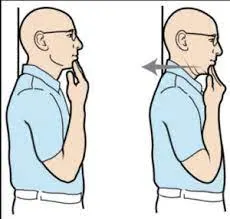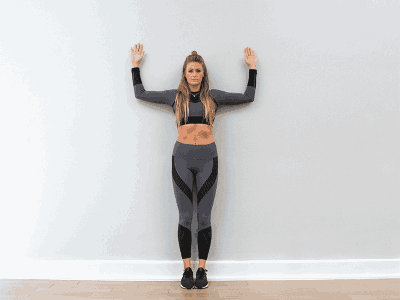Neck pain is a common complaint, especially in today’s digital age, where hours are spent hunched over screens. One of the most effective ways to prevent and alleviate neck pain is by maintaining good posture. Proper alignment of the neck and spine can reduce strain on the muscles and ligaments, ultimately promoting a healthier and pain-free neck. In this blog, we’ll explore the importance of good posture for neck pain relief and provide practical tips to help you achieve and sustain it.
Contents
Understanding The Impact Of Posture On Neck Health
When it comes to neck health, posture plays a pivotal role. The way you position your head, neck, and spine throughout the day can significantly impact the comfort and well-being of your neck. In this section, we’ll delve into the intricate relationship between posture and neck health, shedding light on why maintaining proper alignment is crucial.
Before diving into posture-improving techniques, let’s grasp the connection between posture and neck pain:
- Alignment: Good posture ensures that your head, neck, and spine are aligned correctly. When your spine is in its natural curve, it distributes the weight of your head evenly, reducing strain on the neck muscles.
- Muscle Strain: Poor posture, such as slouching or craning your neck forward, can overwork the muscles in your neck and upper back. This excess strain can lead to tension and pain.
- Vertebrae Health: Proper posture maintains the normal curvature of your cervical spine (the neck region). Misalignment can cause wear and tear on the vertebrae, potentially leading to chronic neck pain.
- Nerve Compression: Poor posture may compress nerves in the neck, resulting in conditions like cervical radiculopathy, which can cause pain, numbness, and weakness in the arms.
Practical Tips For Maintaining Good Posture Throughout The Day
Achieving and maintaining good posture is essential for preventing neck pain and promoting overall spinal health. Here are some practical tips to help you maintain proper alignment throughout your daily activities:
- Ergonomic Workspace: If you work at a desk, ensure your chair supports the natural curve of your spine. Use a cushion or lumbar roll if needed. Additionally, position your computer monitor at eye level, so you don’t have to crane your neck downward or upward while working. Remember to take short breaks every 30 minutes to stand up, stretch, and readjust your posture.
- Smartphone Use: When using your smartphone, hold it at eye level to reduce the strain on your neck.
- Sitting and Standing: When sitting, make sure your back is against the chair, and your feet are flat on the floor. Use a footrest if necessary. While standing, distribute your weight evenly between both feet. Avoid locking your knees.
- Car Ergonomics: In your car, adjust your seat and steering wheel for proper alignment. Use a lumbar roll or cushion if needed. Also, ensure your rearview and side mirrors are correctly positioned to minimize excessive neck twisting.
- Sleeping Posture: Use a pillow that supports the natural curve of your neck while sleeping. Avoid pillows that are too high or too flat. Sleeping on your back or side is generally better for neck health than sleeping on your stomach.
- Backpack Use: If you carry a backpack, avoid overloading it. Use both shoulder straps and adjust them to distribute weight evenly. Position your backpack high on your back to reduce strain on the neck and shoulders.
- Mindful Awareness: Pay attention to your posture throughout the day. Correct yourself if you notice slouching or forward head posture. You can also set reminders on your phone or computer to check your posture periodically.
Effective Treatment Methods For Neck Pain
Neck pain stemming from poor posture can be effectively managed and alleviated through a combination of treatments and lifestyle changes. Here are some effective strategies to consider:
- Physical Therapy: Consult a physical therapist who can assess your posture and recommend tailored exercises and stretches to strengthen neck and upper back muscles, improve posture, and reduce pain.
- Neck Support: Use a supportive pillow while sleeping to maintain the natural curve of your neck. Ensure your mattress and pillows provide adequate support.
- Heat and Cold Therapy: Apply ice packs for the initial 48 hours to reduce inflammation, followed by heat packs or warm compresses to relax tight muscles.
- Over-the-Counter Pain Relief: Non-prescription pain relievers like ibuprofen or naproxen can help reduce pain and inflammation when used as directed.
- Massage Therapy: Regular massages, particularly in the neck and shoulder area, can alleviate muscle tension and promote relaxation.
- Acupuncture: Some individuals find relief from neck pain through acupuncture sessions, which target specific pressure points to reduce pain and improve circulation.
- Lifestyle Adjustments: Maintain a healthy weight to reduce strain on your neck and upper back. Stay hydrated for muscle and disc health. Practice stress-reduction techniques like meditation or yoga to minimize tension-related neck pain.
- Posture Correctors: Consider using posture-correcting devices or braces to remind you to maintain proper alignment.
- Injections: In cases of severe pain, your healthcare provider may recommend corticosteroid injections to reduce inflammation.
- Surgery (In Extreme Cases): Surgery is rarely needed for neck pain due to poor posture. It’s typically reserved for severe structural issues or conditions that do not respond to conservative treatments.
- Mindful Movement Practices: Engage in exercises that promote body awareness, such as Pilates or the Alexander Technique, to improve posture and reduce pain.
Exercises For Neck Pain Relief And Posture Enhancement
Neck pain and poor posture often go hand in hand. Fortunately, a combination of exercises and stretches can help alleviate discomfort and improve your posture. Incorporate these into your daily routine to promote neck health and proper alignment:
Neck Tilts
- Sit or stand with your spine straight.
- Slowly tilt your head to one side, bringing your ear toward your shoulder.
- Hold for 15-30 seconds, feeling a gentle stretch on the opposite side of your neck.
- Repeat on the other side.
Neck Rotations
- Sit or stand with your spine straight.
- Slowly turn your head to one side, as if trying to look over your shoulder.
- Hold for 15-30 seconds, feeling a stretch in your neck.
- Repeat on the other side.
Shoulder Blade Squeeze
- Sit or stand with your spine straight.
- Squeeze your shoulder blades together, as if trying to hold a pencil between them.
- Hold for 5-10 seconds, then release.
- Repeat this motion for 10-15 repetitions.
Chin Tucks
- Sit or stand with your spine straight.
- Gently tuck your chin in towards your neck without tilting your head up or down.
- Hold for 5-10 seconds, then release.
- Repeat this motion for 10-15 repetitions.
Upper Trapezius Stretch
- Sit or stand with your spine straight.
- Reach over your head with one hand and gently pull your ear towards your shoulder.
- Hold for 15-30 seconds, feeling a stretch along the side of your neck.
- Repeat on the other side.
Neck Flexion and Extension
- Sit or stand with your spine straight.
- Slowly lower your chin to your chest, feeling a stretch in the back of your neck.
- Hold for 15-30 seconds.
- Slowly tilt your head backward, looking up toward the ceiling.
- Hold for 15-30 seconds.
Levator Scapulae Stretch
- Sit or stand with your spine straight.
- Reach behind your back with one hand and gently pull your head toward your shoulder.
- Hold for 15-30 seconds, feeling a stretch in the back of your neck.
- Repeat on the other side.
Wall Angels
- Stand with your back against a wall, feet hip-width apart.
- Raise your arms to shoulder height, elbows bent at 90 degrees.
- Slowly slide your arms up the wall as far as you comfortably can.
- Hold for a few seconds, then slowly lower your arms back down.
Cat-Cow Stretch
- Begin on your hands and knees in a tabletop position.
- Inhale as you arch your back, lifting your head and tailbone (Cow Pose).
- Exhale as you round your back, tucking your chin to your chest (Cat Pose).
- Repeat this fluid motion for several breaths.
Doorway Stretch
- Stand in a doorway with one arm on each side.
- Bend your elbows at a 90-degree angle.
- Step forward slightly, gently stretching your chest and shoulders.
- Hold for 15-30 seconds.
Perform these exercises and stretches regularly to help relieve neck pain and enhance your posture. Remember to move slowly and gently, never forcing your neck into uncomfortable positions.
Conclusion
In conclusion, good posture is not just about appearances; it’s a fundamental aspect of neck health and overall well-being. By maintaining proper alignment, you can alleviate neck pain, prevent future issues, and enhance your quality of life. Remember that good posture is a habit that requires practice, mindfulness, and commitment. Whether through ergonomic adjustments, exercises, or simple lifestyle changes, your efforts to prioritize good posture will pay off in the form of a healthier, pain-free neck. So, stand tall, sit straight, and take care of your neck—it’s your vital link to a pain-free, active life.
If you’re experiencing Neck pain, physical therapy for neck pain at PhysioMantra can help: Book an online physical therapy session.
















